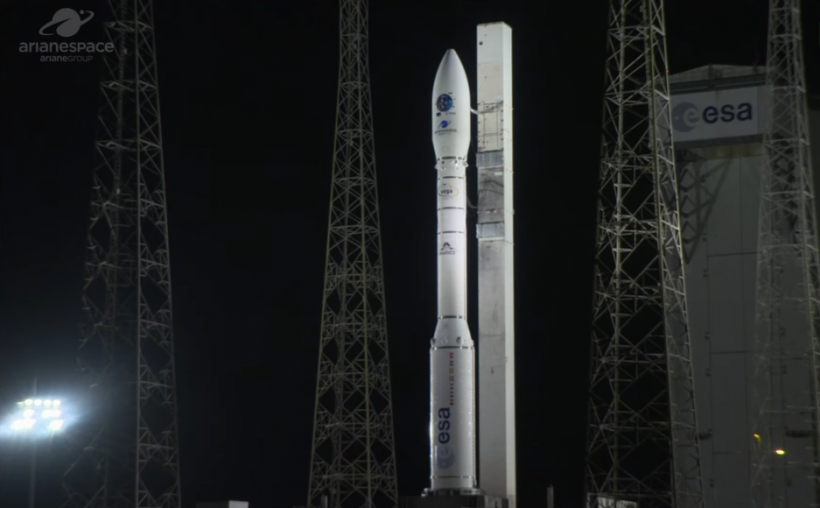The European Vega rocket returns to service by carrying 53 satellites into orbit, lifting off from South America's Guiana Space Center on Wednesday evening, September 2, at around 9:51 PM EDT.
This successful takeoff marked the launch system's first mission after the July 10, 2019 mission, which failed and led to the loss of both the Vega rocket and the FalconEye1.
Return to Service
Vega, whose name is the Italian acronym for Advanced Generation European Carrier Rocket, was developed by both the European Space Agency (ESA) and the Italian Space Agency (ASI). It was first developed in 1998 and saw its maiden launch also at the Guiana Space Center. It is currently operated by the French aerospace company Arianespace.

For its fifth mission in 2020 and the first Vega flight of the year, Arianespace will orbit 53 satellites on the Small Spacecraft Mission Service (SSMS) Proof of Concept (PoC) Flight, performed on behalf of 21 customers from 13 countries.
The rocket is a four-stage booster: a single-body launcher, using no strap-on boosters, supported by three solid rocket stages. The 30-meter or 98 feet tall, the rocket has recently lofted 53 satellites to Earth orbit, payloads on behalf of 21 different clients from 13 other counties. Its clients include American aerospace company Spaceflight Industries, Dutch NewSpace entity Innovative Solutions In Space (ISISpace), as well as a variety of micro satellites and cube satellites.
RELATED: CHEOPS Launched by European Space Agency to Search for Exoplanets
"This flight heralds a new era in rideshare opportunities for small satellites," said Vega Exploitation Program Manager Renato Lafranconi during a prelaunch statement for ESA. He added that the latest Vega mission shows their commitment to "serve European institutions, strengthen our space industry and grow our economy."
The sixteenth mission for the Vega Rocket features its Small Spacecraft Mission Service Proof-of-Concept Flight, a modular dispenser that enables the ridesharing among its 53 satellite payloads (SSMS PoC). Aside from the SSMS, customers in need of sending their satellites into space relied on spare capacity left over from the primary payload - posing difficulty in terms of finding available launch missions with matching requirements.

The SSMS can cater to both a dedicated payload or clusters of small satellites - like microsats and CubeSats - with more customers using the ridesharing service, meaning fewer costs to all customers.
Its modular design is a hexagonal compartment that can accommodate six nanosatellites or a dozen CubeSat. The upper section is for slightly larger payloads - small satellites, minisats, and microsats.
Recovery from VV15
The September 2 (EDT), or September 3 flight at 01:51 (UTC), marks the first flight for the European rocket after the VV15 mishap, or its failure from the 15th Vega mission. The first failure of the Vega launcher project was supposed to be a single-payload mission with a total mass of about 1279 kilograms or a little more than 2,800 pounds.
RELATED: 6 Mishaps in Space Missions That Are Not Complete Failures
Vega's payload in its July 2019 mission was the FalconEye1 satellite, also headed for Earth's orbit. The FalconEye is a high-resolution observation jointly developed by the French-Italian aerospace company Thales Alenia Space and the Airbus Defence and Space, specifically for the United Arab Emirates Armed Forces (UAEAF).
Nine minutes after liftoff, Arianespace Executive Vice-President for Missions, Operations, and Purchasing Luce Fabreguettes said that "about 2 minutes after liftoff, around the Zefiro 23 (Z23) ignition, a major anomaly occurred, resulting in the loss of the mission."
It resulted in the loss of both the rocket and the payload. The loss also led to the highest recorded insurance claim from a satellite launch failure, costing its insurers close to $411.21 million.
Check out more news and information about the European Space Agency on Science Times.














